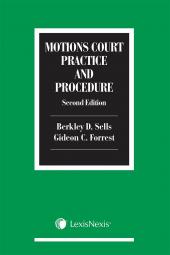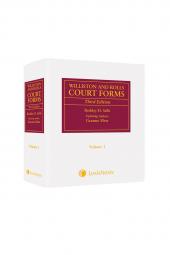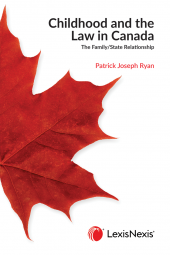Motions Court Practice and Procedure, 2nd Edition
One Year Subscription Only Terms
Subscribers receive the product(s) listed on the Order Form and any Updates made available during the annual subscription period. Shipping and handling fees are not included in the annual price.
Subscribers are advised of the number of Updates that were made to the particular publication the prior year. The number of Updates may vary due to developments in the law and other publishing issues, but subscribers may use this as a rough estimate of future shipments. Subscribers may call Customer Support at 800-833-9844 for additional information.
Subscribers may cancel this subscription by: calling Customer Support at 800-833-9844; emailing customer.support@lexisnexis.com; or returning the invoice marked 'CANCEL'.
If subscribers cancel within 30 days after the product is ordered or received and return the product at their expense, then they will receive a full credit of the price for the annual subscription.
If subscribers cancel between 31 and 60 days after the invoice date and return the product at their expense, then they will receive a 5/6th credit of the price for the annual subscription. No credit will be given for cancellations more than 60 days after the invoice date. To receive any credit, subscriber must return all product(s) shipped during the year at their expense within the applicable cancellation period listed above.
Détails des produits
Successfully navigating the ins and outs of motions court is an essential element of every litigation lawyer's practice.
On July 1, 2015, the Superior Court of Justice's new Consolidated Practice Direction for Civil Actions, Applications, Motions and Procedural Matters in the Toronto Region came into effect. The second edition of Motions Court Practice and Procedure focuses on some of the key changes in motions scheduling and offers current, practical guidance on bringing and responding to motions in Ontario.
Useful reference for anyone preparing for and conducting motions
Co-authored by two seasoned and respected litigators, this guide features strategy, tactics, tips and practice pointers for effectively preparing for and conducting motions in Ontario. It provides detailed explanations of:
- When and where to file the necessary materials
- Sample precedents providing illustrative examples of motion materials
- Guidance on dealing with urgent motions and special circumstances
- A review of how to deal with the costs of motions
What's New In This Edition?
- Focuses on some of the key changes in motions scheduling and also discusses, specifically, the new scheduling procedures for long motions before a judge including summary judgment motions, highlighting two new forms:
- Requisition to Attend Civil Practice Court
- Civil Practice Court: Long Motions & Summary Judgment: Case Information Sheet
- Major change that Civil Practice Court now replaces the former Motions Scheduling Court in Toronto
- Discusses the change in the process by which one schedules a long application, long motion, summary judgment motion or urgent matter before a judge
- Updated set of appendices and forms
A Vital Resource For
- Civil litigators
- Employment & labour lawyers, Family law lawyers, Personal injury lawyers
- Law clerks
- Litigation assistants
- Law schools
Table des matières
Part I – Commentary
Motions: Background and Overview
1. Place of Motion
2. Judge, Master or Registrar? Jurisdiction over Motions
3. "Over-the-Counter" Motions
4. Drafting Notices of Motion
5. Affidavits
6. Solicitor's Certification in Lieu of an Affidavit
7. Scheduling Motions in Toronto
8. Scheduling Motions – Outside Toronto
9. Motion Records
10. Timing on Motions – Minimum Notice Period
11. Facta
12. Book of Authorities
13. Serving and Filing Motion Records, Facta and Books of Authorities
14. Confirmation of Motion
15. Time Estimates
16. Confirming the Motion is on the List and Who is Sitting – Toronto
17. Endorsements and Draft Orders
18. Over-the-Counter Orders
19. Settling Motions
20. Cancelling or Adjourning Motions
21. Costs on Motions
22. Incivility and Civil Motions
Part II – Appendices
 Lexis Nexis
Lexis Nexis 


